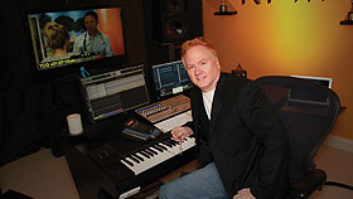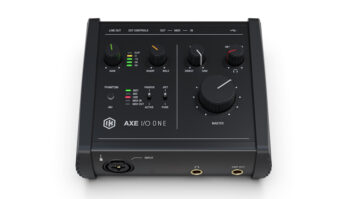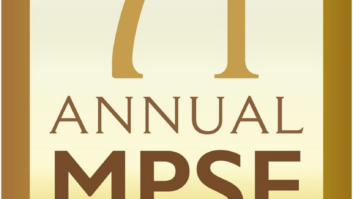
A smooth transition from academia into the world of the professional composer is a dream for many musicians. Colin O’Malley is among the few who have actually achieved this impressive feat. The Albuquerque, N.M., native studied music at the University of New Mexico and parlayed this experience into an internship at Disney World. The arrangements he wrote impressed, and upon graduation O’Malley segued to Florida to dive into full-time composition work. During the past decade, O’Malley has managed to garner a substantial list of credits in varying fields, including indie films, advertising, theme parks (music for The Mummy’s Revenge rollercoaster at Universal Studios) and videogames.
Tomb Raider: Underworld, an Eidos release due in November and pictured at right, is O’Malley’s latest videogame project. “I got a break several years ago when a friend hired me to create the track for Superman Returns, an Electronic Arts game,” he says. “I met a lot of people during the process, and that track opened some doors for me.” The Superman score required a 74-piece orchestra, which was recorded in Bratislava, Slovakia.
“This game [TRU] required two hours of music and the process was very intense,” he continues. “Toby Guard, the writer who created the Laura Croft character, was involved and his vision for the music was specific and dead-on.
“I get no visuals, just detailed descriptions of the game’s levels. You learn how to handle the technical demands as you go along. There are places where you have to create music with multiple layers. If the bad guy enters, for example, you need to amp up the score with additional layers.” Although O’Malley doesn’t consider himself a game composer per se, he says, “It’s something I’m glad to be involved with,” and successes in that still growing field tend to lead to other opportunities.
O’Malley works out of a project studio in his home, with a quad-core Mac running Logic 8 at its heart. “I also have four slave computers running Kontakt 2,” he says. “When you’re working under tight deadlines, it’s essential that you have processors that will allow you to have the entire orchestra live at all times. I’m constantly refining the template upon which I base my sequences. Sometimes I think being organized is more important than creativity!”
An excellent mixer, O’Malley works without a hardware console, but he does use an Evolution UC-33 USB MIDI controller. “It’s a very simple device with a bank of nine faders that I use mostly to automate volume and other MIDI controls. My studio is really very simple. An Apogee Ensemble is my FireWire digital interface, and I have only one set of speakers — Mackie HR824s.”
He uses plug-in processors exclusively, and is picky about which ones he relies on. “I stay away from Logic’s EQ. Sonalkis, for my money, makes the best compressor [SK-315 Mk2] and EQ [SV-517 Mk2] — I use them on everything. Altiverb 6 is a huge part of every orchestration I build. Using different spaces to create multiple early reflections is vital. I also love WizooVerb; I haven’t heard a better algorithmic reverb plug-in.
“I recently discovered the Abbey Road Brilliance Pack,” he continues, “and it’s great, particularly the organic way it handles the high end. And I highly recommend a new plug-in called Time Freezer. It lets you lock audio that takes place over a period of time into one event. The results can be other-worldly.”
O’Malley has dozens of commercially released sample libraries, but the custom samples he recorded across two large sessions form the spine of his orchestral sound. “In particular, I was dissatisfied with the sterile and perfect nature of commercial string libraries. Sustains, for example, are entered into with perfect intonation — but that’s not the way music is made in the real world. Along with several other composers, I recorded string ensembles in Utah, and later on I went to Slovakia to record additional musicians.
“I continue to use some commercial libraries. The Sonic Implants library is often overlooked, but I like it a lot — their percussion is great. Project Sam True Strike is also outstanding, and in the soft synth department Spectrasonics’ Atmosphere is at the top of the list. For basses I use a cheap plug-in from Manytone Music called Manybass. It has a warmth and dirtiness I love.”
One of O’Malley’s steadiest gigs might surprise you: Six years ago, a friend who was working in Yanni’s studio pestered the fellow Floridian to the point where he sat down and listened to O’Malley’s reel. Yanni liked what he heard and hired the young composer to arrange one of his works. Today, O’Malley spends about a third of his time writing for Yanni. “Initially, most of the work is sample-based,” he says. “He’ll send me a piece of music, give me a general direction and then I’ll create an orchestration on my computer — I never use paper and pencil for this work — and send back 24-bit, 44.1kHz stereo stems, usually 12 to 15 of them. Right now, we’re working on a big project called Yanni Voices. Yanni and his producing partner, Ric Wake, are creating material for four terrific singers.”
Gary Eskow is a Mix contributing editor.







